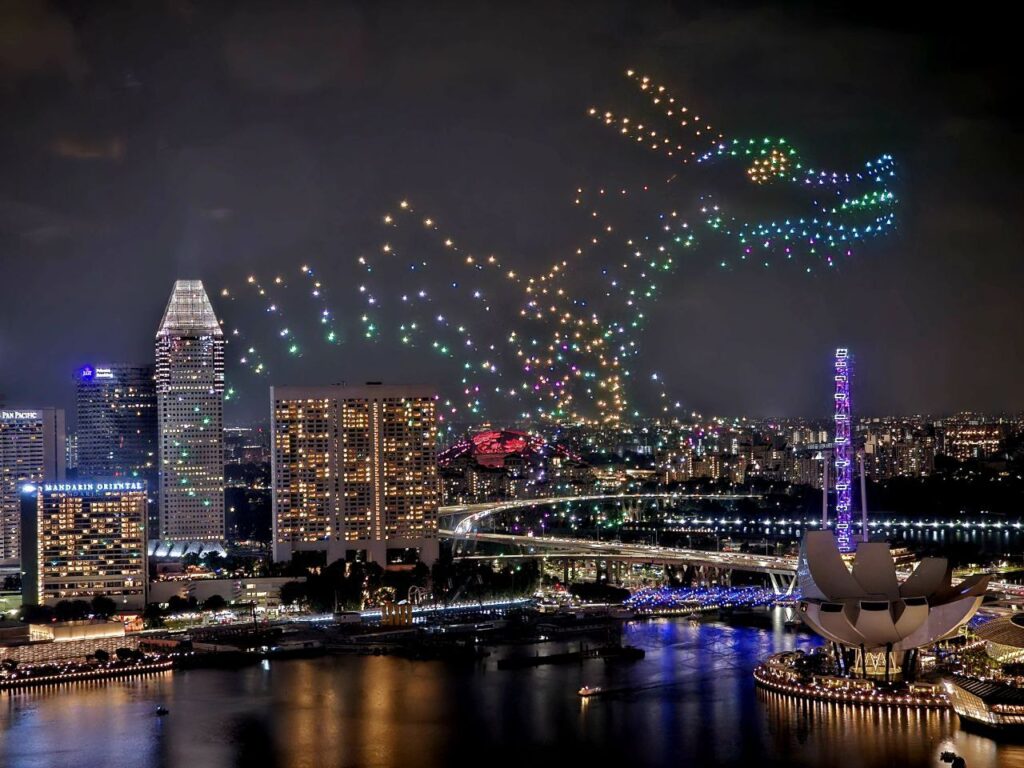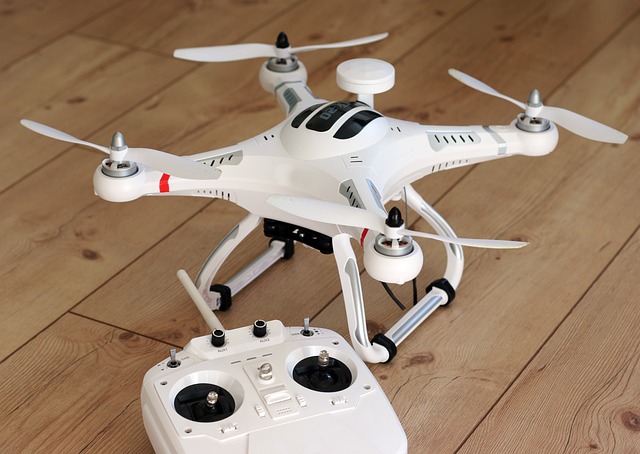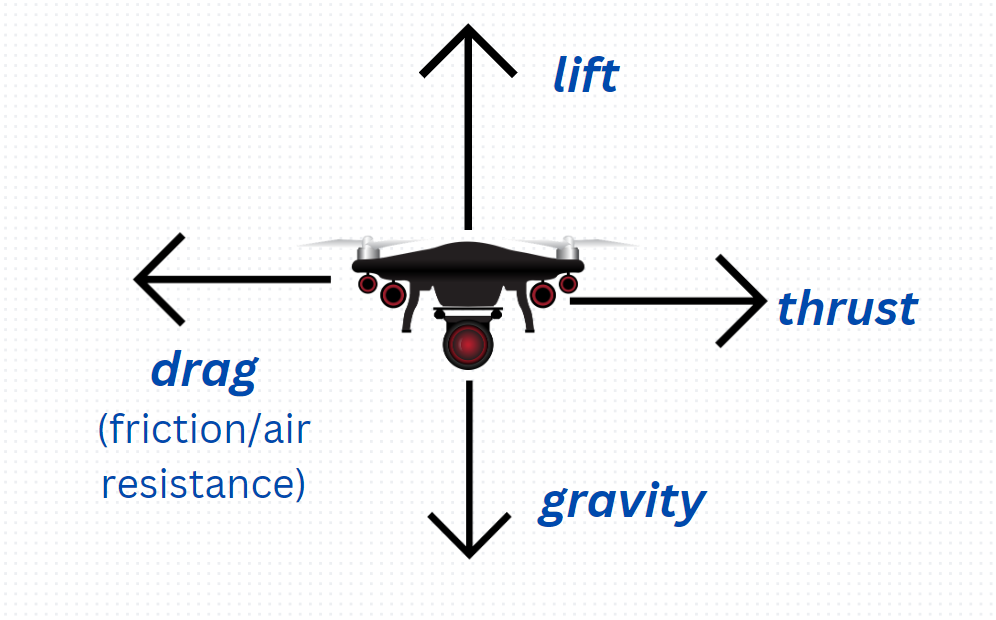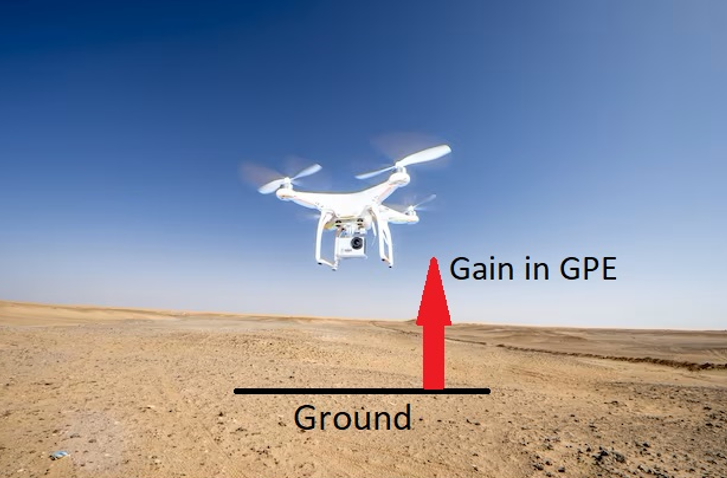HOW DRONES WORK?
🎉 Happy Lunar New Year! 🐉✨ Experience the magic of the Year of the Dragon at Marina Bay with an incredible drone show featuring 1500 drones forming a majestic dragon in the night sky! 🌌✨ Don’t miss out on this breathtaking spectacle of tradition and technology! Read on to find out how drone works!

Basics of Drones
Most drones consist of 5 main components:
- Frame: Provides structural support for the drone. Usually made of lightweight materials like carbon fiber or plastic so that it can move fast. The materials must also be strong so that the drone does not break easily.
- Motor and propellers: Motors convert electrical energy into kinetic energy. The kinetic energy is transferred to the propellers. Drones generally have at least 4 propellers. These generate the necessary lift (upward force) so that the drones can move upwards.
- Battery: Drones are powered by rechargeable lithium-ion batteries. Batteries store chemical potential energy which is converted into electrical energy when there is a closed circuit.
- Flight controller: The flight controller is a circuit board inside the drone. It controls different motors to move the drone in various directions at different speeds.
- Sensors: Drones also use onboard sensors like gyroscopes and speed monitors to detect changes in orientation and speed. These sensors provide feedback to the flight controller, allowing it to maintain stability and control while the drone is in motion.


forces at work on a drone
When a drone is in flight, several forces act on it to control its movement and maintain stability. These forces include:


- Weight (Gravitational Force): A gravitational force is acting on the drone and pulls the drone vertically toward the ground. Weight is the force exerted by gravity on the drone and is dependent on the mass of the drone. The greater the mass of the drone, the greater the gravitational force acting on it.
- Lift: In order for the drone to move upwards into the sky, an upward force is generated by the rotation of propellers. When lift is greater than gravitational force, the drone will move upwards.
- Thrust: Thrust is the force that propels the drone in the horizontal dimension. The drone tilts slightly in the direction of movement. This tilting changes the angle of the propellers, causing the airflow they generate to push the drone in the desired direction.
- Drag (Frictional Force): As the drone moves, it bumps into millions of invisible air molecules. The force of the air molecules acting on the drone is called “air resistance” or “drag”. It is the frictional force between the drone and the air. This force acts opposite to the direction of motion.


When the drone is stationary, the upwards lift force is equal to the force of gravity pulling it downwards, keeping the drone in a fixed position in the air.
By controlling lift and thrust, the drone can be made to ascend or descend, increase or decrease speed, and change directions.
Energy conversions involved in drones


This drone experiences a gain in Gravitational Potential Energy as it moves up from the ground.
- Chemical Potential Energy (CPE): Batteries in the drone store chemical potential energy.
- Gravitational Potential Energy (GPE): When the drone above the ground, it possesses gravitational potential energy. If the drone’s batteries are depleted while it is in mid air, it is still able to move. But it can only move in one direction: down! GPE is converted into KE, and it will crash into the ground!
- Kinetic Energy (KE): Whenever the drone is moving, it has KE.
- Heat Energy: Kinetic energy is converted to heat due to friction. As the drone moves, friction between the drone and the air and friction between the moving parts in the motor and propellers cause heat to be generated. This heat energy is lost to the surrounding air.
The following shows the energy conversions that occur as the drone lifts off from the ground.
Chemical Potential Energy (batteries) -> Electrical Energy (wires/motor) -> Kinetic Energy (motor) -> Kinetic Energy (propeller) -> Kinetic Energy (drone) -> Gravitational Potential Energy (drone)
As the drone is moving, Kinetic Energy -> Heat Energy and Sound Energy
During a drone light show, LEDs (small light bulbs) mounted on the drone convert electrical energy into light energy. The drones are programmed to create colorful patterns in the sky by varying the intensity and color of the light emitted.
Chemical Potential Energy (Batteries) -> Electrical Energy (wires) -> Light Energy (bulbs)
Hope that you have reinforced your understanding of forces and energy concepts as they relate to drone technology. Enjoy the dragon drone light performances at Marina Bay! 🙂
